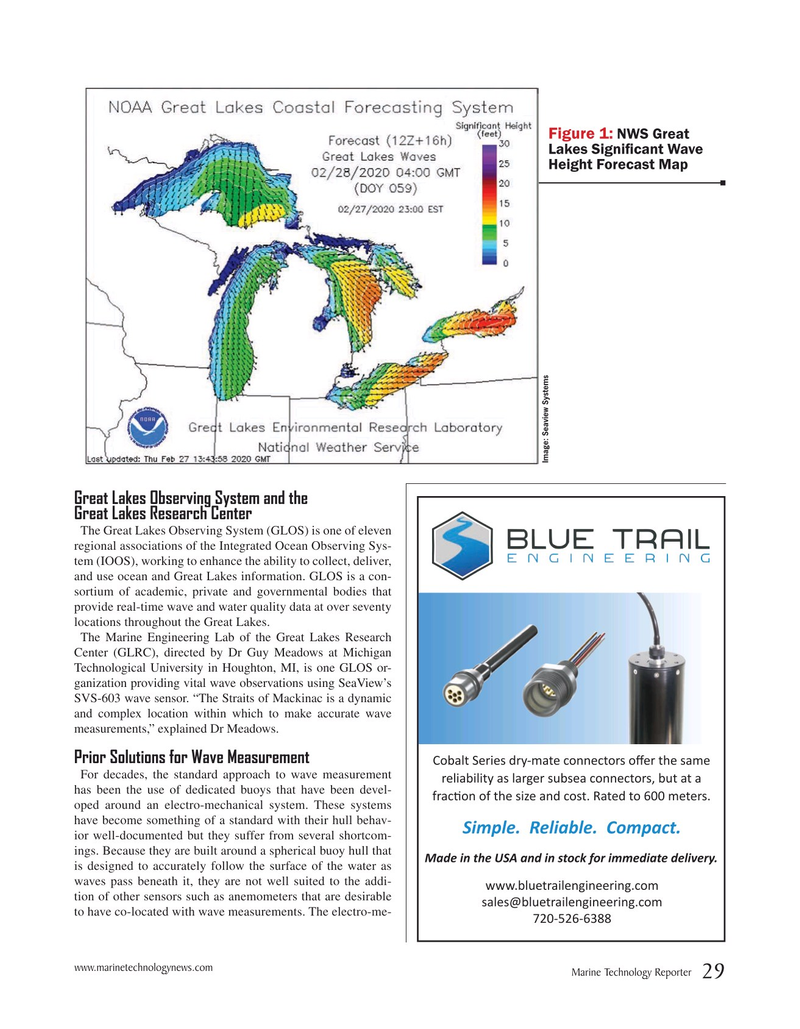
Page 29: of Marine Technology Magazine (June 2020)
Read this page in Pdf, Flash or Html5 edition of June 2020 Marine Technology Magazine
Figure 1: NWS Great
Lakes Signifcant Wave
Height Forecast Map
Image: Seaview Systems
Great Lakes Observing System and the
Great Lakes Research Center
The Great Lakes Observing System (GLOS) is one of eleven regional associations of the Integrated Ocean Observing Sys- tem (IOOS), working to enhance the ability to collect, deliver, and use ocean and Great Lakes information. GLOS is a con- sortium of academic, private and governmental bodies that provide real-time wave and water quality data at over seventy locations throughout the Great Lakes.
The Marine Engineering Lab of the Great Lakes Research
Center (GLRC), directed by Dr Guy Meadows at Michigan
Technological University in Houghton, MI, is one GLOS or- ganization providing vital wave observations using SeaView’s
SVS-603 wave sensor. “The Straits of Mackinac is a dynamic and complex location within which to make accurate wave measurements,” explained Dr Meadows.
Prior Solutions for Wave Measurement
Cobalt Series dry-mate connectors ofer the same
For decades, the standard approach to wave measurement reliability as larger subsea connectors, but at a has been the use of dedicated buoys that have been devel- fracton of the size and cost. Rated to 600 meters.
oped around an electro-mechanical system. These systems have become something of a standard with their hull behav-
Simple. Reliable. Compact.
ior well-documented but they suffer from several shortcom- ings. Because they are built around a spherical buoy hull that
Made in the USA and in stock for immediate delivery.
is designed to accurately follow the surface of the water as waves pass beneath it, they are not well suited to the addi- www.bluetrailengineering.com tion of other sensors such as anemometers that are desirable [email protected] to have co-located with wave measurements. The electro-me- 720-526-6388 www.marinetechnologynews.com
Marine Technology Reporter 29

 28
28

 30
30
